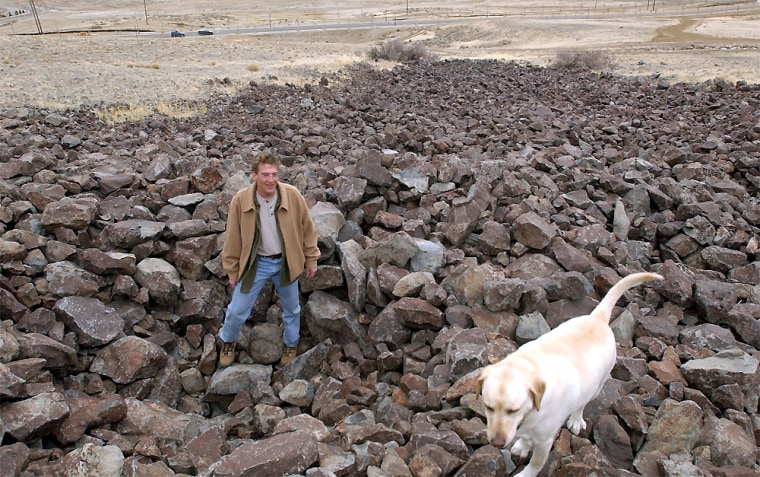The trial of two men accused of stealing ancient artwork from an American Indian site has sparked a discussion about the best way to protect artifacts — by keeping them secret or posting signs that welcome visitors and would-be vandals alike.
The two men claim they are innocent since they never saw any official signs marking the ancient petroglyphs on national forest land. Land managers say such signs would only invite trouble.
“Putting up a sign at an archaeological site is almost like saying, ‘Dig here for buried treasure,”’ said Fred Frampton, the U.S. Forest Service’s chief archaeologist for the Humboldt-Toiyabe National Forest, where the works were taken.
With few exceptions, Frampton’s opinion is the prevailing view among federal land managers and most tribal leaders faced with a choice between trumpeting precious archaeological sites or keeping them under wraps.
“If it’s in a well-traveled area and people know about, then putting up signs is fine,” said Pat Barker, the U.S. Bureau of Land Management’s state archaeologist for Nevada. “But if you put up signs when people don’t already know about it, you can lose the resource.”
Priceless 1,000-year-old etchings
John Ligon, 40, of Reno, and Carrol Mizell, 44, of Van Nuys, Calif., are on trial for allegedly stealing three boulders in August 2003 with artwork etchings that tribal leaders say are priceless and more than 1,000 years old.
They are charged with unlawful excavation of archaeological resources and theft of government property. The crimes carry potential maximum sentences of more than 10 years in prison and $250,000 in fines. Their trial resumed Tuesday.
They claim they were trying to protect the rock art from an encroaching subdivision and say they didn’t know it was illegal to remove the boulders because there were no signs marking the site.
To mark or not to mark
Terry Birk, a Forest Service archaeologist, testified last week against the use of guideposts to label such sites. “It is my contention that signing or fencing would draw increased visitation and potential vandalism to the petroglyphs,” Birk said.
But, as a lawyer for one of the defendants was quick to point out during opening statements, keeping the site unmarked didn’t work either.
“There is this theory, this amazing theory, that if you don’t sign and label the site, people won’t go there and it will be kept a secret,” said Scott Freeman, Ligon’s lawyer. “And that that is the only way to keep it safe because we, as the government, don’t trust you as citizens.”
David Whitley, a world-renowned expert on dating of ancient rock art who testified on behalf of the defense, said the case is a good example of why signs should be posted.
“Sticking your head in the sand and saying that if you pretend it doesn’t exist, no one will damage it, is unrealistic,” said Whitley, an archaeologist who has authored 12 books.
Whitley acknowledged there is a history of sites being damaged by vandals.
“But that’s really tailed off the last decade or so because people are more aware and concerned about cultural resources. Today, your average person is going to respond favorably,” he said.
What the jury must decide
The jury must determine if the art is more than 100 years old, worth more than $1,000 and the men knew or “should have reasonably been expected to know” the petroglyphs were archaeological resources possessing value.
Their lawyers insist they did not. Ligon called them “cool rocks” and neither ever used the word “petroglyph” in describing the rocks with the etchings of a hunter, a bighorn sheep and a lizard, they say.
Without any signs, they couldn’t have been expected to know, said David Houston, Mizell’s lawyer.
But Barker and others disagree.
“There’s no blanket permission to go on public land and do anything that isn’t prohibited on a sign,” Barker said. “We don’t have a sign on every tree, but people know it’s illegal to cut them down without a permit. We don’t have a sign on every fish,” he said.
“They knew it wasn’t theirs. My dad taught me when I was 5 years old not to take what wasn’t mine.”
